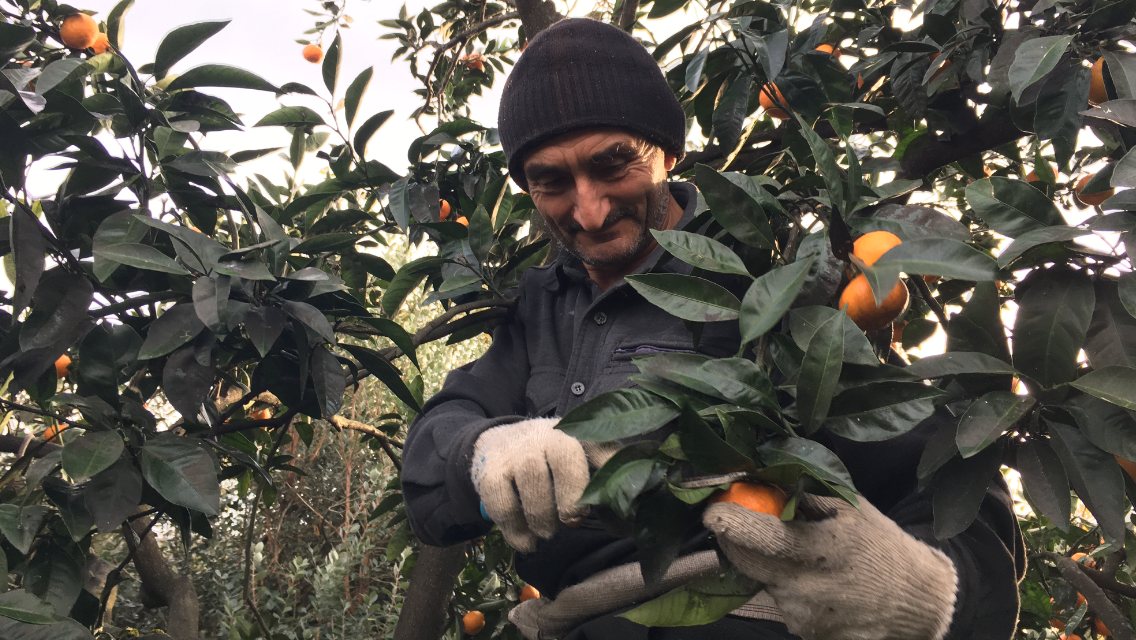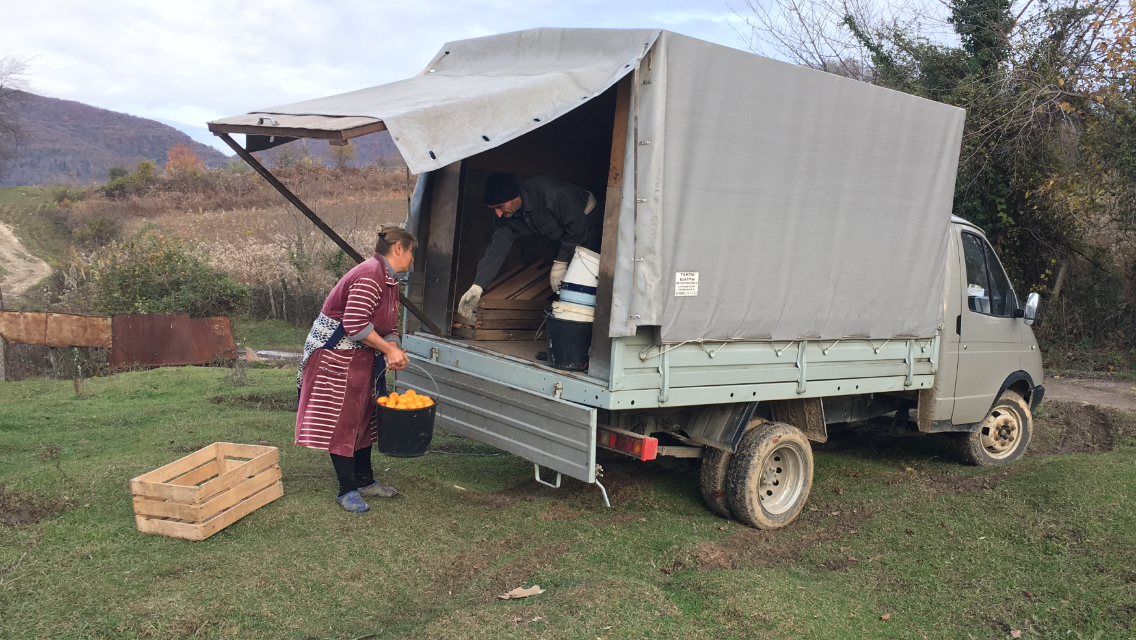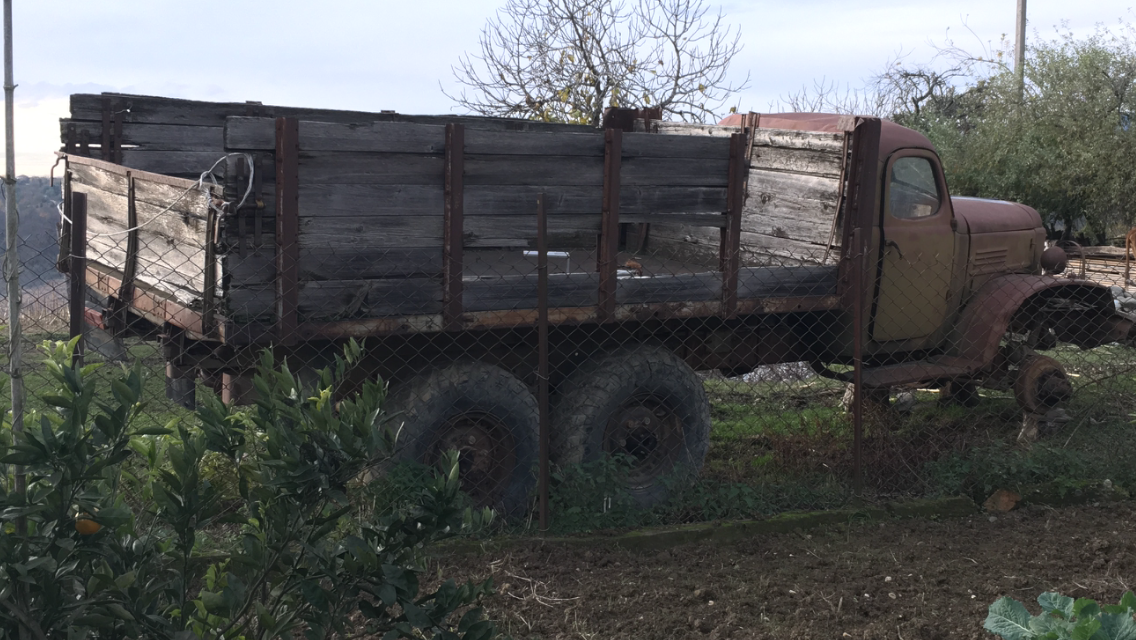Abkhaz tangerines fighting for their rightful place on the Russian market

The tangerine season has begun in Abkhazia – the most active period after the summer in Abkhazia, since the main earnings for the local population come from these two areas: tourism and the citrus business.
Local farmers grow tangerines, oranges and lemons, and sell mainly to Russia. Statistics for 2018 look very promising.
• Tourism: Abkhazia’s informal business sector
• Brown marmorated plague: the war on stink bugs in Abkhazia
• Russian business setting up camp in Syria through South Ossetia
According to the customs committee, more than 100 tonnes of citrus fruits are imported from Abkhazia to Russia every day, and go up to 700 tonnes per day towards New Year’s Eve.
This is five times more than last year, when the stink bug caused great damage to the republic’s agriculture.
Experts say the current harvest in Abkhazia will reach about 30 thousand tonnes of tangerines, and almost all of it will be sold on the Russian market.
Exporting in time for New Year’s
The main problem for villagers in Abkhazia now is bad weather. They need to have enough time to harvest their crop before 25 December – otherwise they will miss out on the most lucrative time in Russia to sell.
“Our tangerines have a special taste – they are both sweet and sour. And outwardly, too, they differ from their Chinese equivalents. The skins of our tangerines are dense, but peel off easily,” says Hovhannes, a resident of Yashtukhva village, 10 kilometres from Sukhum.
He loads wooden boxes with tangerines into his car and lays a piece of fabric over the surface of each tangerine. A few hours later, Hovhannes will transport the goods to Russia and pass them off to dealers right on the border. The price will depend on their appearance.
His wife Ruzanna and their three daughters are all involved in the harvest and work from dawn to dusk, trying to harvest as much as possible before the next rains.

Chinese or Abkhaz?
The families don’t get to rest in the evening, either. They sit up and sort tangerines and try to make them as presentable as possible.
Many farmers in Abkhazia complain that it is becoming increasingly difficult for them to compete on the Russian market with tangerines from China, Morocco, Iran and other countries.
“Abkhaz tangerines are in demand for their taste, but the Chinese ones are shinier and cheaper,” says Ruzanna.
During the Soviet years, Abkhaz tangerines became a popular brand in Moscow and other Russian cities. You can find Chinese tangerines in many stores, though they are very different in appearance and bear the inscription ‘Abkhaz’.
“My neighbour was at a market in Moscow in October. All the tangerines displayed were purported to be Abkhaz. They don’t look like ours at all. Moreover, the Abkhaz tangerines ripen by mid-November, so they cannot be on the shelves in October,” says Ruzanna.
In Soviet times, Hovhannes says, a person who owned a citrus orchard was considered prosperous. Back then, a family could harvest around 11-12 tonnes of tangerines, whereas now they only manage around seven tonnes. Moreover, it was possible to buy a car or build a house with the money earned for the sold crop.
Now things have become more complicated. Hovhannes gives part of the harvest to wholesalers in the Russian Adler area. He sells another portion in Abkhazia, to dealers.
The wholesale price per kilogram of tangerines depends on the place of purchase. If you sell directly from home, the price is 20 rubles [approximately 30 cents]. If you are transporting to the Russian side of the border – 30-40 rubles [approximately 50 cents].
In stores in Russia, Abkhaz tangerines sell at a price of 60 rubles [about one dollar] and higher.

Who earns how much on citrus sales
Around 15 years ago, Yevgeny Sinyavsky inherited an orchard in Pobeda, a village in the Gulrypsh District, from his grandfather, who taught him gardening skills.
This year, Eugene plans to collect about five tonnes of tangerines on his 25 acres. By approximate calculations, the net profit may be about 80 thousand rubles [approximately $1,200].
“Last year, due to the invasion of the stink bug and heavy rains in May, just at the time of citrus blossoms, I was in the red. And I’m not alone. This is also considering the fact that I do almost everything myself. I invite experts only for spraying the bushes. If I had hired people for picking, mowing and pruning trees, then doing this would be completely unprofitable,” he says.
Yevgeny sells his tangerines to dealers for about 20-25 roubles per kilogram. By the time they’re in Krasnodar, the tangerines cost about 16 roubles more: the cost of crossing the Russian border at the Psou checkpoint is 12 rubles per kg, and there are also transportation costs.
Feijoa, oranges and lemons also grow on Yevgeny’s farm. A few years ago, he planted 50 new tangerine trees and 20 feijoa trees on his grandfather’s plot. Only nine mandarin seedlings made it. He says he will try again next year.
“That, of course, is business,” he says. But he does not plan to buy more land, saying it is too unprofitable for business:
“I will only keep and improve what my grandfather inherited, if only from a sense of duty.”




















